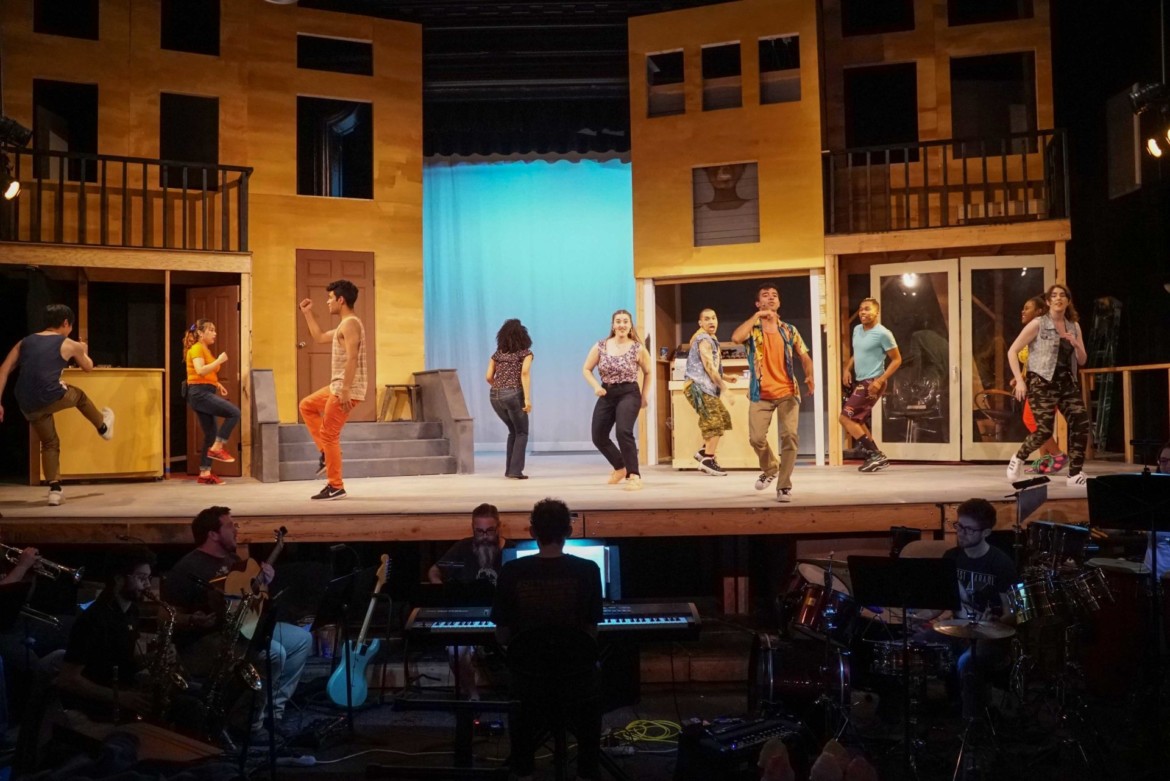School of Fashion costume design students have been gaining experience in a plethora of techniques and disciplines this past year through interdepartmental collaborations
By Priyanka Malhotra and Christianne Philippone
As the end of 2019 approaches, let’s shine a spotlight on the costume design students from Academy of Art University’s School of Fashion and applaud their work for the collaborative projects produced throughout the year. Under creative direction of Costume Design Coordinator Alina Bokovikova and Costume Production Supervisor Bethany Deal, the students have honed their artistry in a variety of productions, from opera and web series to immersive theater experiences.
The art of visual storytelling in a musical
The Spring 2019 semester production of “In The Heights” was put on stage by the School of Acting and directed by Clark Lewis. The musical, set in a Hispanic American neighborhood in New York City’s Washington Heights is a romantic story of breaking barriers to pursue one’s dreams, even when they seem impossible.
B.F.A. costume design students Tigress Hart, Xingxing Niu, Jasmin Santiago, Ting Xiong, Patrick Wang, and Binghui Zhou, created the outfits as part of the Costume for Theatre Production class. They portrayed the characters in casual yet groovy costumes, representative of the exuberant nature of the neighborhood.
The color palette of “In The Heights” ranged between bright contrasting red, yellow, orange, and blue. Each outfit was handpicked by the designers to fit the character’s personality. While Usnavi (Daniel Cancel) wore floral shirts to represent his shy and dreamy soul, Benny (Michael Houston) wore formal shirts to convey his persistent workaholic attitude.
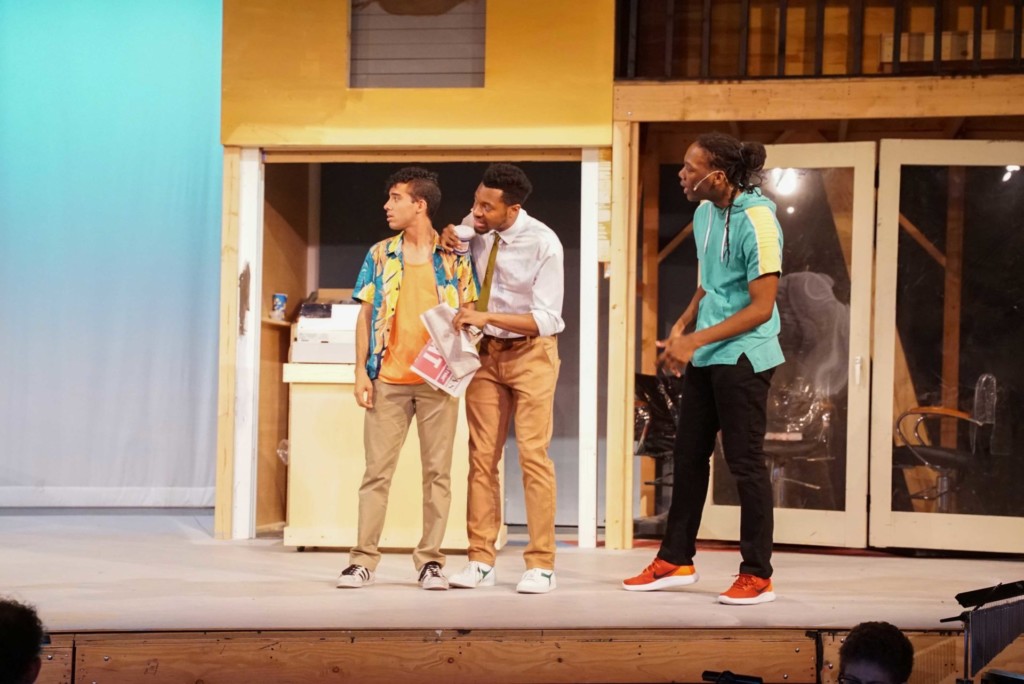
It may not occur to us, but designing to accurately convey a persona takes a lot of time and effort. From research and sourcing to building the outfits and color coordination, the designers are required to multitask at all times. “We did extensive research into style in Manhattan and what people wear in New York City,” explained Xiong.
The design team pulled off a successful show with limited time and budget. “The students did amazing work translating the characters, as this play is very culturally-focused,” said Bokovikova.
Costume designers play a vital role in any production. With the saying ‘first impression is the last impression’ in mind, a costume designer has to execute their work carefully in pre-production and follow the vision of the production director and scriptwriter. Every detail, from the color palette to the hemline of the shirt, contributes to the impact on the audience. The aim is to deliver a magnificent and effortless look, while staying within the budget.
Despite the grand expectations from “In The Heights,” the costume designers faced a major setback when their budget was cut short just a few weeks before the show. Hart recalled the last-minute changes. “It’s not just coordinating with the actors but also with the directors and the production team. The most important thing was nailing that look, not just for us as creative students but for everyone in the show. It got a little tricky sometimes, but that’s the great thing about this environment. This is why having a costume shop is super important to us, that’s where we pull a lot of our costumes.”
Cutting the budget can sometimes mean that the design process must start over. The designers then have to come up with new creative solutions in a very limited timeframe. The challenge, however, paid off. “The end results and seeing your work on the stage is the best of all,” shared Santiago.
Ultimately, the most exciting part about the costume designers’ journey is to not only handpick or design the clothes, but also facilitate the audience’s emotional connection to the story. “Every part of the costume design helps to tell a story. It is the main path to visual storytelling,” said Bokovikova.
Behind the scenes of “How May I Help You?”
This past summer, the Schools of Motion Pictures & Television (MPT) and Fashion collaborated on a short web series produced by students in MPT. Student designers Cody Lenz and Becky Flaherty took part in the Collaborative Project & Creating the Web Series class.
“How May I Help You?” is a web series centered around a building manager in an apartment complex in San Francisco. In each episode, the manager is solving the tenants’ problems. There are six episodes in total, and the filming process can take hours at a time.
The creation of a web series involves many steps and employs a large cast and crew. The staff includes the main director for each episode, student producers, actors, set designers, and costume designers. Producers, actors, and directors are mostly involved in the shooting process of each episode, while set designers and costume designers focus on the behind the scenes aspects. Costume designers focus on the outfit of each character, while set designers create each apartment and building facades that the show uses on set.
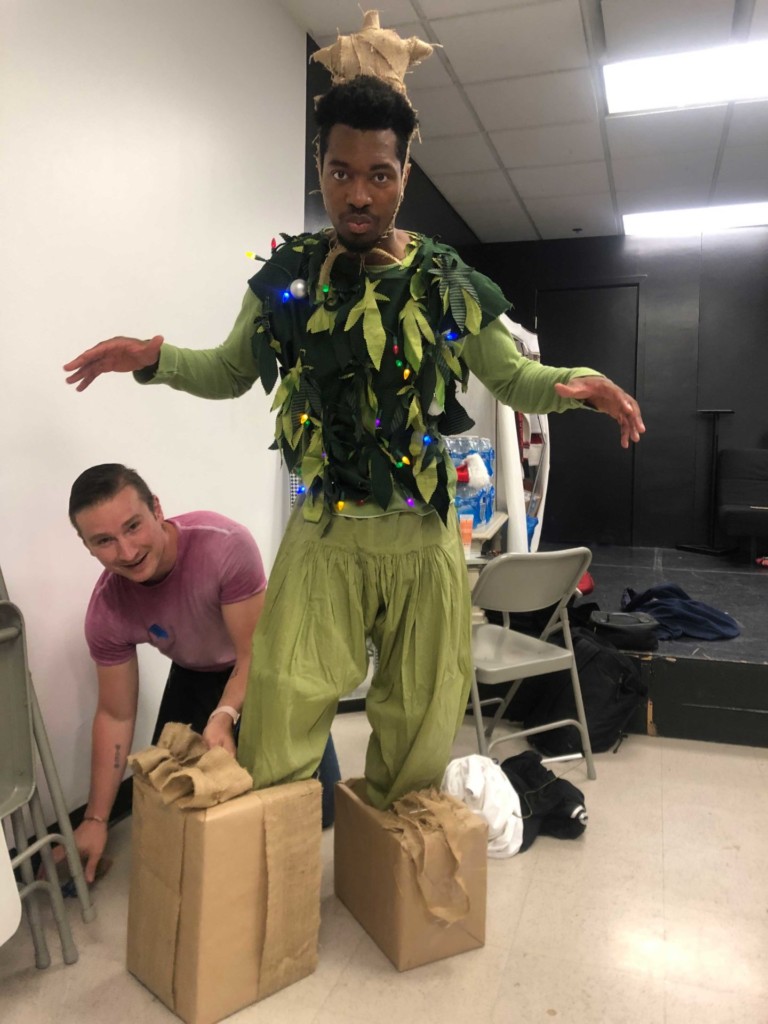
Lenz and Flaherty divided the work, each working on three episodes. They took turns filling the shoes of the head costume designer and the assistant; this created an easier transition between the episodes, as the students were aware of each other’s plans for the next episode.
Costume design and fashion design require different types of creativity. The designers have to fully understand a character, their personality, and their role in the production, then create a wardrobe for that character. Costume designers help create the scenario on set by taking the director’s written ideas and turning them into visual, sartorial concepts.
When putting together a wardrobe for screen production, there’s a plethora of things the designers have to be mindful of. For example, in a scene where a character is fixing an elevator, the actor had to be rigged for safety reasons. Lenz and Flaherty had to create two identical outfits for the scene, maintaining a ‘natural’ look while abiding by the safety rules. When a scene involved fake blood, duplicates of costumes had to be created. And finally, the costumes they provided had to look good on camera from all angles.
The student designers had great help from both Bokovikova and Deal who guided Lenz and Flaherty through challenges with the logistics and encouraged students to maintain creativity in the process. The experience was invaluable.
When working on the web series, the costume designers took on many additional roles; stylists, character developers, and creative directors. Projects like this help young costume designers get prepared for their future careers in film and stage productions.
“Pirates of Penzance”: Summer escapade in Santa Cruz
“Pirates of Penzance,” an opera production by the UC Santa Cruz Music Department, marked the third year in a row of collaboration between UCSC and the costume design program at the Academy. The lively operetta by Gilbert & Sullivan is set in the late 19th century on the coast of England. It covers the story of dandy pirates and their encounter with the Modern Major General and his lovely wards.
The costumes for this production were designed by Academy graduate student Marisely Cortes, assisted by junior students Chelsea Summer, Siyue Pan, Meng Zhang, and Xiong. At the request of the opera director Sheila Willey, the show was sprinkled with elements of Santa Cruz, paying homage to both the university beach town and to the English beach town the play is set in.
As lead designer, Cortes chose to make the four main wards Edith, Mabel, Kate, and Isabel stand out from the rest of the cast by putting them in bright, royal tones, and keeping their prints minimal.
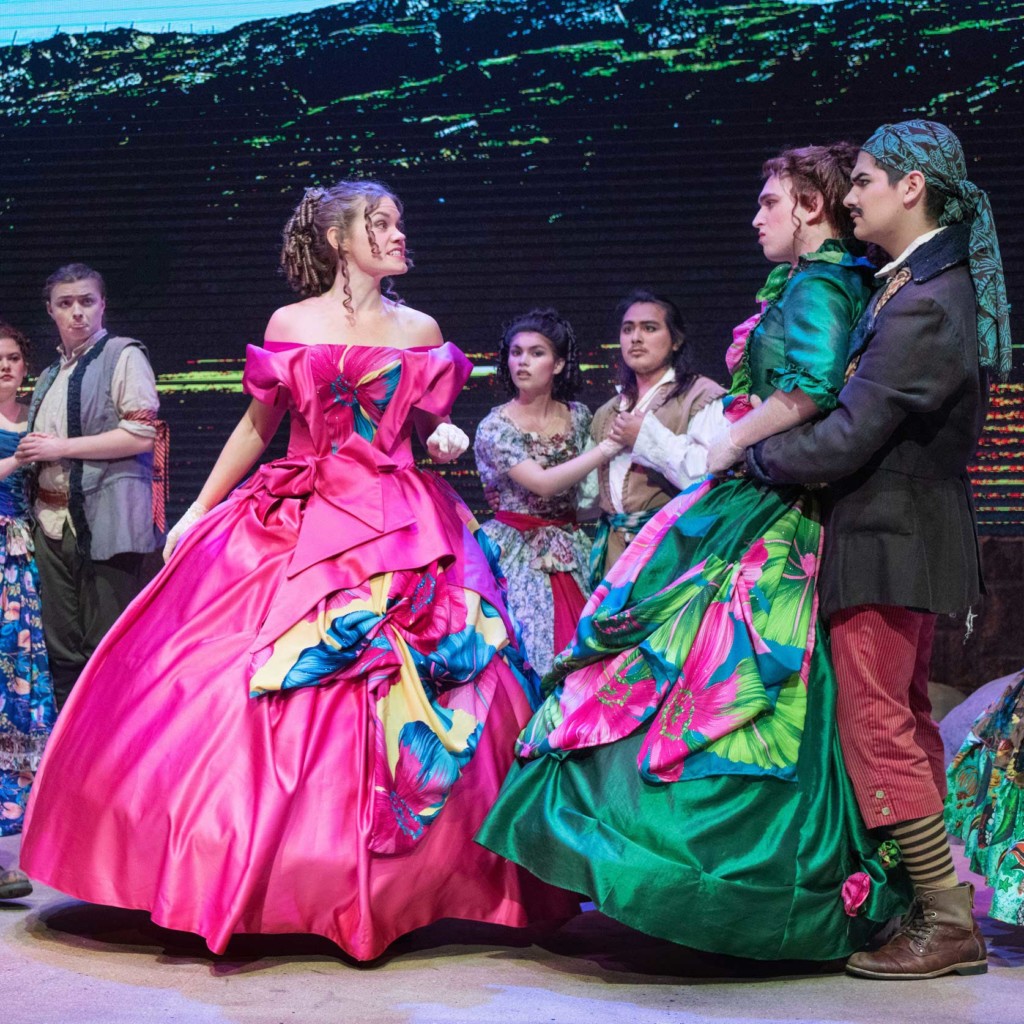
“These costumes are an eclectic mix of period-accurate silhouettes and local beach inspiration,” explained Cortes. “By mixing both 17th and 18th-century silhouettes and pulling inspiration from Santa Cruz by way of color and floral prints, we were able to create beautiful and unique costumes that capture the eye and show appreciation for centuries-old fashion.”
For the pirates, she kept to the traditional looks of the 18th century, while incorporating playful patterns and prints to showcase their eclectic travels. The pirate king’s frock coat was trimmed with quilted patterns. The Modern Major General was festooned with military regalia that leaned into the comedy and absurdity of the show.
“Santa Cruz, being the relaxed beach town that it is, allowed us to be more relaxed in our designs,” said Cortes. “The pirate costumes are set in the 17th century but incorporate funky, coastal patterns inspired by local artist Jim Aschbacher. The costumes for the daughters are set in the 18th century but feature vibrant floral prints for a touch of present-day beach town style.”
Grateful for the support of her design team, she recalled the challenges of the production. “It was the first time I designed for such a big show, so this was a big challenge for me, in addition to all the inconveniences that occurred in the design and construction process,” said Cortes. “Many times, the original ideas changed, and we had to adapt and let them go, but always remember our main concept.”
Fall collaborations: “Incubus” and One Acts
This past fall semester continued with a collaboration on the immersive Halloween experience “Incubus,” produced by the School of Acting under the creative direction of Hector Zavala.
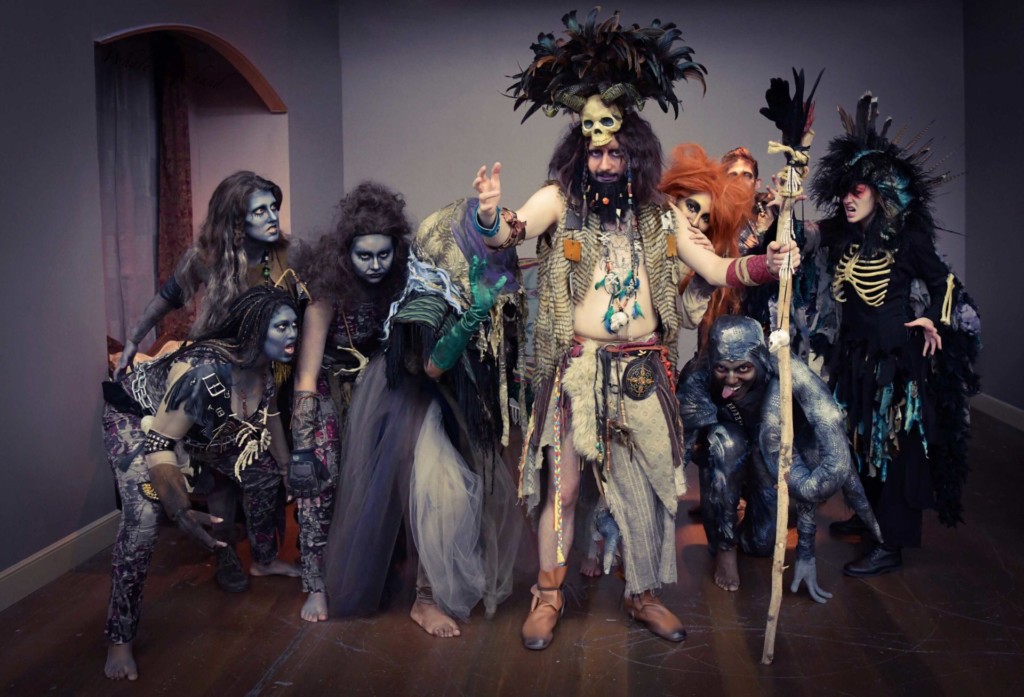
Set after the 1906 San Francisco fire, the story centers around a mother and her two adopted children. Her daughter has been having nightmares and so she reaches out for help to a Shaman who summons demons instead of helping.
All students from the production class Kendra Evans, Trinity Hamilton, Siyue Pan, Phoebe Taylor, Yikun Wang, Xiong, and Ziman Yue were able to research and create their own designs for the demons. Each student could practice rendering the characters, shopping for fabric and other textiles, and contribute to the overall look of the show. The demons were handcrafted by the students, using complicated construction techniques such as padding, illumination, building from unconventional materials, and distressing.
The final project of 2019 is a collection of One Acts, managed by Hector Zavala. This is a series of 10–15-minute plays that are individually directed. Each of the costume design students designed one to two of the short shows, ranging in style, time, and genre for a fun-filled night of theater.
